Section 8 Read online
This is a work of fiction. Names, characters, places, and incidents either are the product of the author’s imagination or are used fictitiously, and any resemblance to actual persons living or dead, business establishments, events, or locales is entirely coincidental.
BLACK OPS SECTION 8 by Bob Mayer
COPYRIGHT © 2005 by Bob Mayer, Updated 2012
All rights reserved. No part of this book may be used or reproduced in any manner without written permission from the author (Bob Mayer, Who Dares Wins) except in the case of brief quotations embodied in critical articles or reviews.
Cool Gus Publishing
http://coolgus.com
Black Ops Section 8
by
Bob Mayer
PROLOGUE
18 March 1314 . An Island In the Seine River, Paris
The world’s greatest cathedral was in its 161st year of construction and still not complete according to the original architect’s grand vision. This morning, something that was not part of the architect’s plan marred the promenade in front of the church: a man tied to a wooden stake surrounded by bushels of reeds soaked with flammable liquid. In front of him him, a crowd had gathered.
The cathedral was not the first place of worship to be built on the island in the Seine River. To make room for the massive cathedral, the ancient church of St. Etienne had been torn down in 1163, after standing there since 528 AD. Before that, there had been a Christian basilica on the spot, preceded by a Roman temple to Jupiter, when that empire from the south had held sway over the land. And before the Romans, there had been older forms of worship conducted on the spit of land in the middle of the river. It was consecrated ground, and today it was going to be blessed with blood and human ash.
Construction on Notre Dame had begun in 1163, based on the vision of Maurice De Sully, Bishop of Paris. He had dedicated it to the Virgin Mary, and instructed the architects to design the exterior to impress and the interior to retell stories of the Bible for his largely illiterate constituency via portals, paintings, and stained glass. De Sully was a wise man and knew how people’s minds—and hearts—worked. Impress them, and then indoctrinate them.
The cathedral’s choir was completed in 1182, after only nineteen years; though that was the life span of many at the time. The nave was completed twenty-six years later, and the imposing front towers that would dominate the skyline of Paris for centuries were finished between 1225 and 1250. Still, there was work to be done to complete the grand vision of the long-dead bishop and original architects. It was a project larger than the lives of any who worked on it, in an age when such things were considered by some to be the best way to worship and pay homage to their god.
Today’s event had the mask of religion, but had nothing to do with faith at all, except as it was subservient to the desires of a handful of men.
Inside the church, on a platform near the top of one of the two tall towers that flanked the entrance, three men stood in the shadows, the distance each one kept from the others indicating mutual dislike and distrust. From their commanding position they looked out into the early morning gray light, eyes fixed on the man tied to the stake. The procession leading the condemned to his place of death had occurred just before dawn, and now all was ready.
The man in the center nodded. “It is time.”
The finely garbed figure to his left, his royal status indicated by the ring with an embedded crest on his finger and the small crown on his head, seemed reluctant for a moment, then stepped up to the opening in the stone wall. He glanced once to his right, past the man who had just spoken, to the third figure, who also had an ornate ring, which indicated power of another sort, in his case, that of the Roman Catholic Church. The Pope barely twitched his head, indicating approval, albeit not an enthusiastic one. Even though they were in a church, it was obvious from the way the three interacted that neither the Pope nor the King was not the one with the ultimate power here.
Today’s event had nothing to do with politics either, except as it was subservient to the desires of a handful of men.
King Philip called out in a voice used to giving commands: “Serve the sentence.”
The voice of the executioner echoed against the stone walls of the cathedral in reply, carrying over the watching crowd. “For crimes against the state and the Church, the accused, Jacques De Molay, is sentenced, this day, the eighteenth of March, in the year our Lord 1314, to death by flame.”
The succinct announcement was punctuated by the executioner putting his torch to the bundles of reeds arrayed around the condemned man. De Molay’s once fine robe was tattered and blood-spattered from both his arrest and a night of torture. He was looking toward the cathedral at the three who watched him from the shadows. In the same place he had stood with them, watching others suffer the same fate. He appeared not to notice the fire that was igniting around him.
The bundles were arranged at such a distance from the accused that he would not die quickly. Instead, heat and smoke would cause great suffering for a considerable period of time before overcoming him. The noble theory behind the cruelty was that it would give him a chance to repent before going to meet his final judgment.
The executioner knew his craft well and since the king was here to see the deed, he would give his master a good show. There was an art to everything. And because there had been little notice of this event, and the condemned apparently did not generate great sympathy from those who had gathered, there were none who had brought their own reeds among the crowd. Sometimes a prisoner with friends among the crowd, would get a quick departure when the friends would rush the stake and throw their own combustibles against his or her body. It was the twisted mercy of a quick death.
De Molay lifted his chin and drew in a deep breath, one that was just beginning to be affected by the smoke. He was a warrior, a man who had issued orders to men in combat, sending them to their deaths. He was also the Grand Master of the Knights Templar, which until this morning had been the most powerful and richest organization in Europe. At least apparently.
“Upon your heads be it,” De Molay cried out in a deep voice. “Philip, puppet of the Church and pretend king. And Clement the great pretender from Rome. You will join me and be judged before the Court of God within the year. With my dying breaths I place this curse upon your heads.”
In the tower, the two men he had just named glanced at each other once more. King Philip IV and Pope Clement V had orchestrated De Molay’s arrest along with that of all the Knights Templar across France the previous day. The two believed in God, but they also lived in an age of superstition, and De Molay’s curse shook them. There was power in De Molay’s words and the circumstances, which made them even more ominous. The words of the dying had power.
De Molay coughed from the smoke beginning to swirl about his head, then shouted out once more. “And the one who pulls your strings. The High Counsel of the Organization. Who was my puppet master. I name you—”
But before he could finish, a figure stepped out from the encircling crowd and heaved a small clay pot full of liquid. The Grand Master screamed as the flammable liquid splattered on his skin, snatched the fire, and immolated him. Whatever he’d been about to reveal was lost in his agonized screams.
De Molay’s body arched and then contracted, almost ripping free of the ropes that bound him, as every muscle in his body spasmed, trying to avoid the pain as flame seared through his skin. But the external flame is not what killed him. It was the seering fire that poured into his mouth, down his throat, and into his lungs as he desperately tried to breathe. So great was De Molay’s will, though, that he managed to live long enough to break free of his now burning ropes and stagger forward a few steps through the fire. He raised a hand toward Notre Dame, the fingers blackened
and twisted, his mouth now moving wordlessly, his singed lungs unable to function. Then he collapsed, body tightening into the fetal position, as those taken by the flame always did.
Inside the stone tower, Philip and Clement turned to the third man, the High Counsel. He wore no rings or crown. He was dressed simply in a long black robe with a brooch on the upper right chest. It consisted of an iron cross with a silver circle laid upon it.
“You betrayed De Molay,” Philip said. “He just said he worked for you. This was never brought up.”
“I am the High Counsel,” the man said. “I answer to no one and explain myself to no one.”
“How do we know you will not betray us?” Philip demanded.
The High Counsel was staring at De Molay’s burning body. “You do not. The Knights Templar needed to be cut down like a dangerous weed. You now have their money to fill your treasury. That was the agreement. This is the best course of action for the three of us and those we represent.”
“The Templars fought for the Church,” Clement said. “They were steadfast in their faith.”
“They were steadfast in the profits they made from usury,” the High Counsel replied. “Which, if my teaching serves me right, is against Church canon. They fought for the Church when it fit their needs or I told them to.” He shifted his gaze to the Pope. “You had no choice, and have no choice. You will do as I order.”
With that, the High Counsel turned and made for the stairs, leaving King and Pope behind him.
As soon as he was out of sight, Clement V made the sign of the cross and evoked his own curse: “May God take His own vengeance on you and those you rule.”
Philip nodded his assent, but still fearful that the man might overhear them, did not say anything.
The High Counsel slowly descended and was met halfway down the seventy-meter high tower by the man who had thrown the flammable liquid onto De Molay and silenced him. Like the High Counsel, he used no name other than his title: the Curator.
“The reports from across the continent are coming in, Lord High Counsel,” the Curator informed the High Counsel, and fell into step beside his superior, who retraced the route down the tower. “The knights are finished. A few managed to escape, but most are in custody. Their base of power is gone.”
The High Counsel nodded but made no comment. They exited the tower and made their way through the silent cathedral, the early-morning sun casting long shadows through the stained-glass windows, which depicted various biblical scenes. Neither man paused to appreciate the displays. They exited at the rear, where a coach, surrounded by a dozen of the Curator’s men armed with swords and crossbows, awaited them. The two entered the coach, the guards mounted their horses, and the entourage moved out.
Inside the coach, they sat across from each other. The curtains were drawn and the interior dark. Despite the lack of light and dialogue, the High Counsel could sense the mood of his chief of security.
“You are upset about disbanding the Templars?”
The Curator had worked for the High Counsel all his life. He’d been at the side of the High Counsel as his bodyguard and responsible for overall security of the organization for over twenty years. He knew better than to deny his true feelings.
“Yes, Lord.”
“They were becoming too powerful, and coming out of the shadows much too far,” the High Counsel said. “Worse, once De Molay became aware of our existence and that we were using his knights for our own means via the Church, the Templars became dangerous. Our best security is ignorance of our existence and surrounding ourselves with many rings of protection and secrecy.”
“I understand, Lord High Counsel,” the Curator said. “But who will we use for our force in the world now? For our outer ring of protection? We need that buffer of ignorant protection to keep our secrecy.”
“We will always be able to find and manipulate shadow warriors to unknowingly protect us. There are many ways to manipulate men’s hearts and minds to do what we bid without them knowing that we bid it.”
“And the Pope and king?”
“Ah, the real cause for your concern,” the High Counsel said. “Let us make De Molay’s dying curse come true. Make sure both are dead within the year.”
The Curator nodded in agreement. “For the greater good.”
“For the greater good,” the High Counsel echoed.
CHAPTER 1
The Present The Philippines
Jungle surrounded the Philippine army firebase, a dark wall of menacing sounds and shadows in the grayness of evening. The sounds of men preparing for battle—the clank of metal on metal, the grunts of rucksacks being lifted, the murmur of quiet talk between comrades—was muted compared to the noise of the jungle.
“Too close.”
Major Jim Vaughn turned to the man at his side, his top noncommissioned officer and his brother-in-law, Sergeant Major Frank Jenkins. “What?”
Jenkins nodded at the wall of trees. “Field of fire is too narrow. You could get RPGs right there and blast the crap out of this place.”
Vaughn had noted the same thing as soon as they landed. “Let’s be glad this is our last time here.”
“Damn civilians,” Jenkins muttered.
“Ours is not to question why—“ Vaughn began.
“Ours is but to do and die,“ Jenkins finished. “Not the most cheery saying in the world, Jim.”
Vaughn shrugged. “Okay. But this beats taking tolls on the Jersey Turnpike.”
“Not by much,” Jenkins said. “And maybe I’ll be one of those toll takers next month. I’m so short—”
Vaughn held up a hand while he laughed. “Not another ‘I’m so short’ joke, Frank. Please. My sister knows how short you are.”
Jenkins frowned. He reached into one of his pockets and retrieved a worn photograph of a young woman, tenderly placed it to his lips and gave it a light kiss. “You ain’t so young anymore, babe, but you still got it.”
He said the words to himself, but Vaughn could hear. He had seen his brother-in-law enact this ritual five times before with his older sister’s photo, and it always made him uneasy. Jenkins slid the picture back into his pocket, technically a violation of the rules requiring they be “sterile” for this mission, carrying nothing that indicated in any way who they were, but Vaughn didn’t say anything.
Jenkins turned to Vaughn. “Let’s get ready.”
Both reached down and lifted the MP-5 submachine guns lying on top of a mound of gear. Made by Heckler & Koch of Germany, they were the standard for most Special Operations forces. These were specially modified with integrated laser sights, and had telescoping stocks allowing the entire weapon to be collapsed to a very short and efficient length or extended for more accurate firing. The worn sheen of the metal indicated they had been handled quite a bit.
Like warriors throughout the ages, the two men geared up for battle. The process was the same—all that had changed was the actual gear. In some ways, with the advent of advanced body armor technology, soldiers were harkening back to the days of knights, when protection was almost as important as weapons. It was a constant race between offense and defense, an axiom of military technology.
Vaughn was tall, just over six feet, and wiry. The uniform draped over his body consisted of plain green jungle fatigues without any markings or insignia. Over the shirt, he slid on a sleeveless vest of body armor securing it tightly around his torso with Velcro straps. It was lightweight but still added noticeably to his bulk. On top of that went a combat harness festooned with holders for extra magazines for the submachine guns, grenades, FM radio, and knife. He wrapped the thin wire for the radio around the vest, placed the earplug in his left ear, and strapped the mike around his throat
Vaughn slid an automatic pistol into a holster strapped on the outside of his left thigh. Two spare magazines for the pistol went on either side of the holster. Two more spare magazines were strapped around his right thigh in a specially designed holster. He then pulled hard compos
ite armor guards up to just below his elbow, protecting his forearms from elbow to wrist, followed by thin green Nomex flight gloves. Whether handling hot weapons, forcing his way through thick jungle, or simply for protection against falling, he had long ago learned to cover the skin on his hands.
For the final piece of weaponry, he used a loose piece of Velcro on his combat vest to secure a set of brass knuckles that had been spray-painted flat black.
“You can take the boy out of Boston, but you can’t take Boston out of the boy,” Jenkins commented.
“South Boston,” Vaughn corrected his team sergeant. Jenkins had grown up on a farm in Wisconsin and always found his wife’s and brother-in-law’s stories of big city life strange. As strange as Vaughn found Jenkins’s stories of farm life.
“If you got to use those,” Jenkins said, pointing at the brass knuckles, “you’re in some deep shit.”
“That’s the idea.” Vaughn looked over at him. “You carry that pig sticker everywhere,” he said, referring to the machete Jenkins had just finished securing behind his right shoulder, the handle sticking up for easy access.
“It’s for firewood,” Jenkins replied.
“Yeah, right.”
Finally came a black Kevlar helmet, not the same distinctive shape the rest of the United States Army wore, but simply a semiround pot with a bracket bolted to the front. Out of a plastic case, Vaughn removed a set of night vision goggles and latched them onto the bracket, leaving the goggles in the up and off position so they wouldn’t obscure his vision. The amount of gear he wore limited his exposed flesh to a small patch between his eyebrows and chin, which was already covered with dark green camouflage paste. The entire effect was dehumanizing, making the men seem like machines, not flesh and blood.
A third, similarly dressed figure walked up in the dimming light. “Sergeant Major, don’t you think your wife knows how short you really are?”

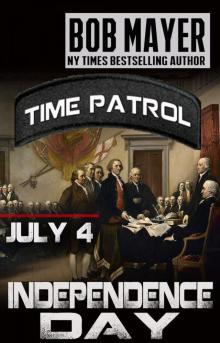 Independence Day
Independence Day Invasion
Invasion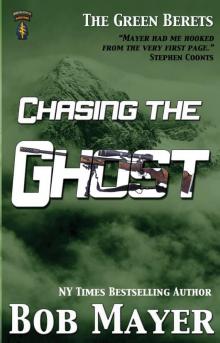 Chasing the Ghost
Chasing the Ghost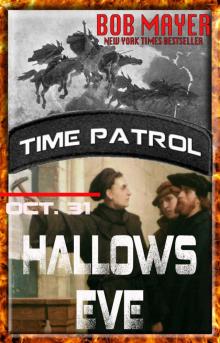 Hallows Eve
Hallows Eve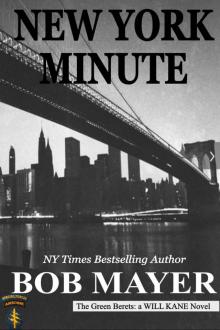 New York Minute
New York Minute Valentines Day
Valentines Day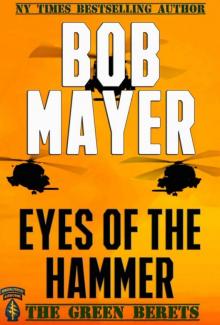 Eyes of the Hammer
Eyes of the Hammer Walk on the Wild Side
Walk on the Wild Side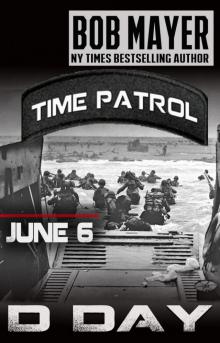 D-Day
D-Day Lawyers, Guns and Money
Lawyers, Guns and Money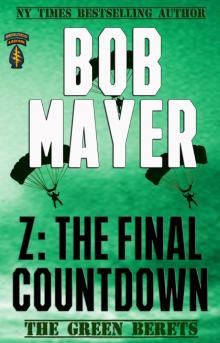 Z: The Final Countdown
Z: The Final Countdown Redemption: Area 51, #10
Redemption: Area 51, #10 Time Patrol
Time Patrol Interstellar
Interstellar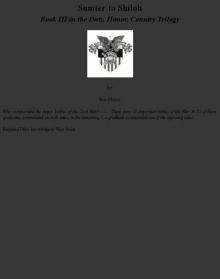 Sumter to Shiloh
Sumter to Shiloh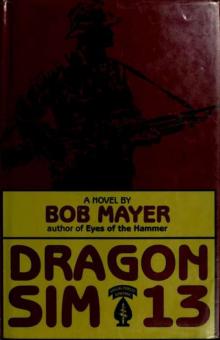 Dragon Sim-13
Dragon Sim-13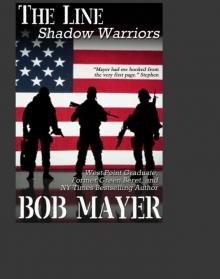 The Line
The Line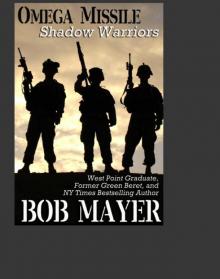 Omega Missile (Shadow Warriors)
Omega Missile (Shadow Warriors) The Rift
The Rift The Jefferson Allegiance
The Jefferson Allegiance Project Aura
Project Aura Synbat
Synbat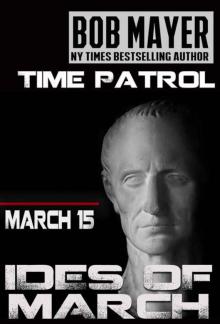 Ides of March (Time Patrol)
Ides of March (Time Patrol)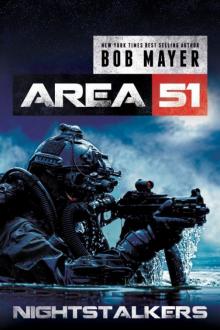 Nightstalkers a5-10
Nightstalkers a5-10 Lost Girls tc-2
Lost Girls tc-2 West Point to Mexico
West Point to Mexico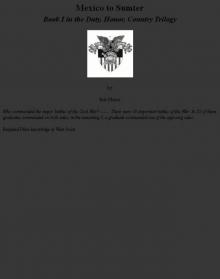 Mexico to Sumter
Mexico to Sumter Area 51_Invasion
Area 51_Invasion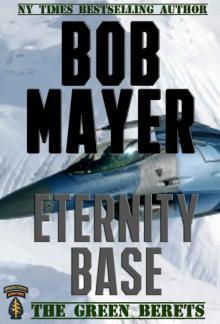 Eternity Base
Eternity Base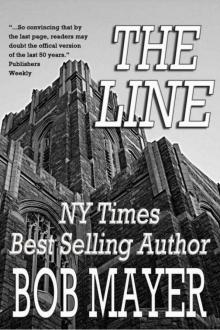 The Line bo-2
The Line bo-2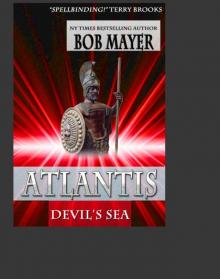 Atlantis Gate
Atlantis Gate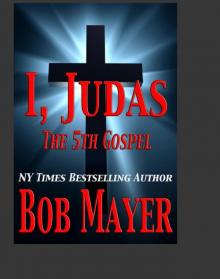 I, Judas
I, Judas Area 51_Redemption
Area 51_Redemption Bodyguard of Lies
Bodyguard of Lies Cut Out
Cut Out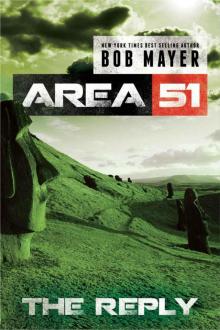 The Reply (Area 51 Series Book 2)
The Reply (Area 51 Series Book 2)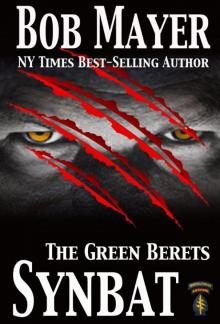 Synbat tgb-3
Synbat tgb-3 The Book of Truths a5tn-2
The Book of Truths a5tn-2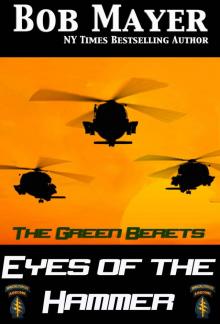 Eyes of the Hammer (The Green Beret Series)
Eyes of the Hammer (The Green Beret Series) The Gate
The Gate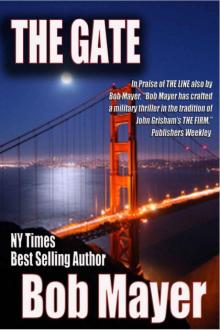 The Gate bo-1
The Gate bo-1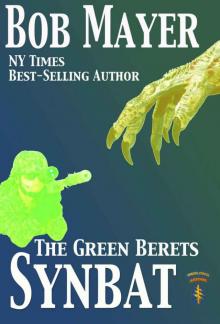 Synbat v5
Synbat v5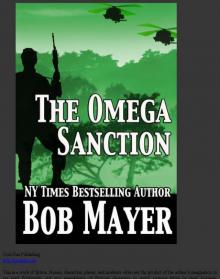 Omega Sanction
Omega Sanction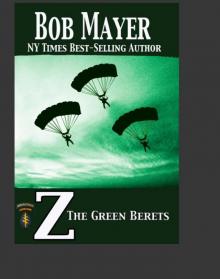 Z
Z Chasing the Son
Chasing the Son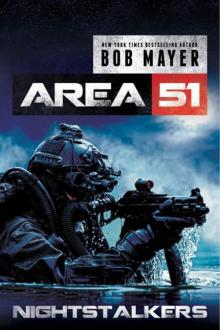 Nightstalkers
Nightstalkers The Book of Truths
The Book of Truths Dragon Sim-13 tgb-2
Dragon Sim-13 tgb-2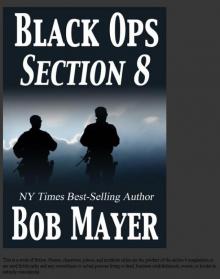 Section 8
Section 8 Chasing the Ghost v5
Chasing the Ghost v5 Psychic Warrior
Psychic Warrior Chasing the Lost
Chasing the Lost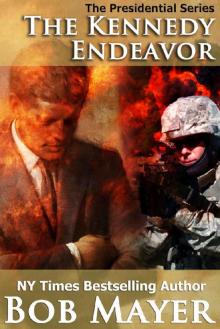 The Kennedy Endeavor (Presidential Series Book 2)
The Kennedy Endeavor (Presidential Series Book 2)